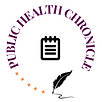Public Health News Analysis
Highlights of the Union Health Budget 2023

Image Credit : Freepik
Author : Dr Swati Ray
Updated on :
February 27, 2023
Union Health Budget - 2023, MoHFW
The Union Budget 2023 was unveiled by Finance Minister Nirmala Sitharaman on 1st Feb 2023. The Ministry of Health and Family Welfare was allocated 89,155 crores as health budget for the financial year 2023-24.
This year's health budget was 0.34% higher than last year’s 86,200 crores. After accounting for inflation this is a decline. Allocations to health research were reduced to Rs 2980 Crore in 2023-24 from Rs 3200 Crore in 2022-23.
Key announcements for the healthcare sector
Facilities in select ICMR labs will be made available for research by public and private medical faculties.
A mission to eliminate sickle cell Anemia by 2047 will be launched to create awareness creation & universal screening of 7 crore people under the age of 0-40.
The implementation of dedicated multidisciplinary courses for medical devices is to be supported by the government in institutions to ensure skilled manpower for futuristic medical tech and high-end manufacturing and research.
The establishment of three centers of excellence for artificial intelligence to enable ‘Make AI for India’ and ‘Make AI work for India’ to enhance India’s digital prowess.
A National Data Governance policy will be introduced which will enable access to anonymized data.
157 new nursing colleges will be established in colocation with the existing 157 medical colleges that have been established since 2014.

Areas that need more focus and fund allocation
Child and maternal nutrition
Antimicrobial resistance
Mental Health
Critical areas of Pandemic Preparedness
Non-Communicable diseases
Preventive Medicine
Strengthening public health facilities & their infrastructure
Medical Tourism
Health insurance/assurance
Covid 19 pandemic exposed glaring weaknesses in India's Healthcare System. These shortcomings can only be fulfilled through improved financial allocation for health services. Ensuring the availability of free medicines and diagnostics in all public facilities would help decrease out-of-pocket expenditures substantially.
At least 30% of the population, or 40 crore individuals – called the missing middle in NITI Aayog 2021 report (Health Insurance for INDIA's Missing Middle) - are devoid of any financial protection for health. Health insurance, both public & private sectors require remodelling to decrease the incidence of catastrophic health expenditure.
Non-communicable diseases contributed 61.8% of deaths in 2016 (ICMR study 2021). Major NCDs are covered under the Tertiary Care Programme of the Centre. The union government transfers funds to states to implement centrally sponsored schemes for cancer, diabetes, and cardiovascular diseases, health care for the elderly, the national blindness control program, telemedicine, mental health, and tobacco control. Its budget was almost halved to Rs 289 crore from Rs 500 crore.
Is the Health budget in line with UN Sustainable Development Goals ?
Being a signatory to the UN Sustainable Development Goals, India should strive to provide equitable health care to all. More funds should be allotted to primary and community health centers for prioritising preventive medicine. Health programs, public education, screening, and diagnostic programs for the early detection of diseases are the need of the hour.
More teaching hospitals should be established at the district level to make tertiary care accessible to everyone near their residence. Specialist doctors should be incentivized & provided with tools to work in peripheral facilities. An announcement to make 157 nursing colleges is a welcome move to address the human resource shortage. However, it remains to be seen how the government will create vacancies and place the newly trained workforce in rural settings.
Pradhan Mantri Jan Arogya Yojana (PMJAY) has received higher funds than last year. NITI Aayog data says that 78 percent of the PMJAY funds flow into private hospitals. This may further weaken the public health system.
Pradhan Mantri Swasthya Suraksha Yojana (PMSSY)
Pradhan Mantri Swasthya Suraksha Yojana (PMSSY) funding is reduced by 66% (from 10000 crores in 2022-23 to 3365 crores in 2023-24). PMSSY aims at correcting imbalances in the availability of affordable healthcare facilities in the different parts of the country in general and augmenting facilities for quality medical education in the under-served States in particular.
National Tele-Mental Health Programme
One of the most pressing issues in India is mental health. WHO estimates that the burden of mental health problems in India is 2443 disability-adjusted life years (DALYs) per 10,000 population. The economic loss due to mental health conditions, between 2012-2030, is estimated at USD 1.03 trillion. The scale of mental disorders in India accounts for nearly 15 percent of the global mental health burden. Although the launch of the National Tele-Mental Health Programme is a step in the right direction, a mere allocation of 133 crores is inadequate to address the magnitude of the problem.
The pharmaceutical industry received a major upgrade to 1250 crores against 100 crores last year. This will go towards the promotion of Bulk drug parks and medical device parks.
Conclusion
This Health Budget is technologically forward, focused on economic growth, skilling, innovation, and strengthening of pharmaceutical industry & medical devices infrastructure.
Unfortunately, a myriad of basic issues and healthcare infrastructure needs immediate attention.
As we move forward in the next decade, we should aim to improve financial allocation for the health sector significantly to build a robust healthcare system for all.
.png)




Great clarity in thoughts and precisly written!